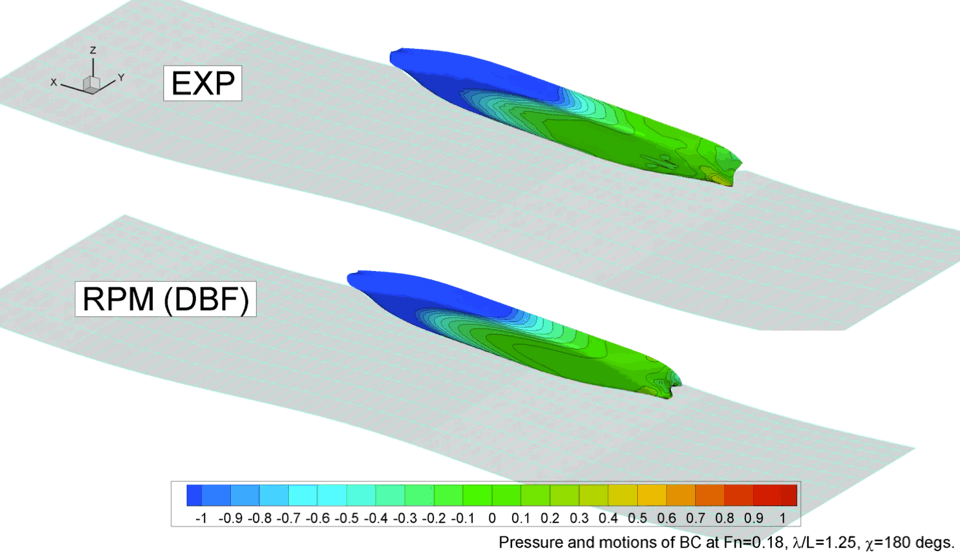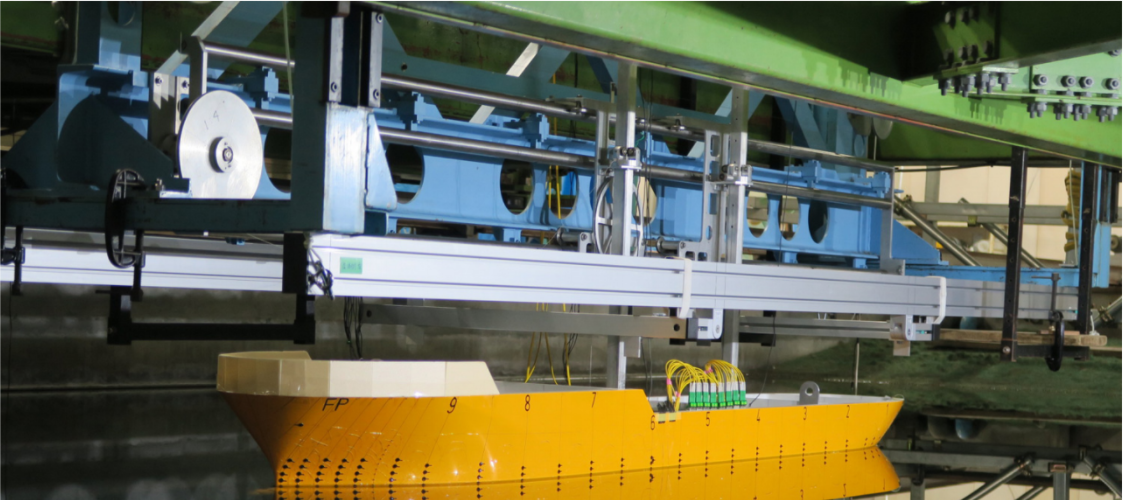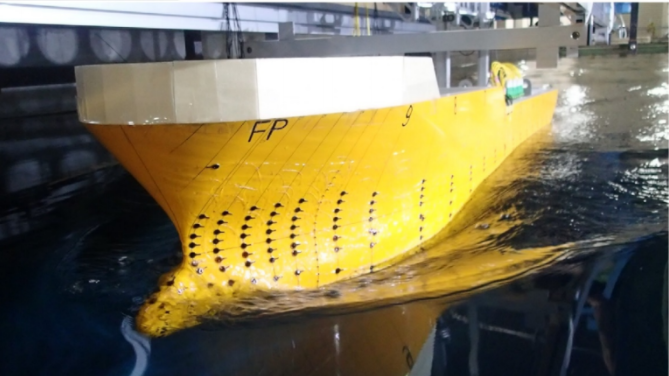New Research Technique for Measuring Pressure Distribution on Ship Hulls
At the Research Initiative on Oceangoing Ships at Osaka University, researchers conducted an unprecedented experiment with Luna sensing technology to gain the world’s first data for the spatial distribution of wave-induced pressure on the surface of a ship’s hull.
Determining how much pressure ocean waves will place on a ship’s hull is important in the ship-design stage so that engineers can appropriately architect the floating structure to withstand the wave conditions and anticipated loads.
The experiment was conducted on a ship model of a bulk carrier using 333 Fiber Bragg Grating (FBG) pressure sensors and 19 strain sensors affixed on the whole ship-hull surface to measure wave-induced motion as well as ship-side wave profiles. Data was collected with Luna’s HYPERION si255.

This animation from the experiment demonstrates the motion of the ship and pressure at Fn=0.18
.
The successful results of this experiment provide a new research technique for predicting wave-load distribution and for studying local hydrodynamic features in wave-related phenomena.
Read about Luna's os9100 optical pressure sensor here.


Full results of the experiment can be found in the journal Applied Ocean Research in the article “Prediction of nonlinear vertical bending moment using measured pressure distribution on ship hull” and accessed via the Science Direct service here.